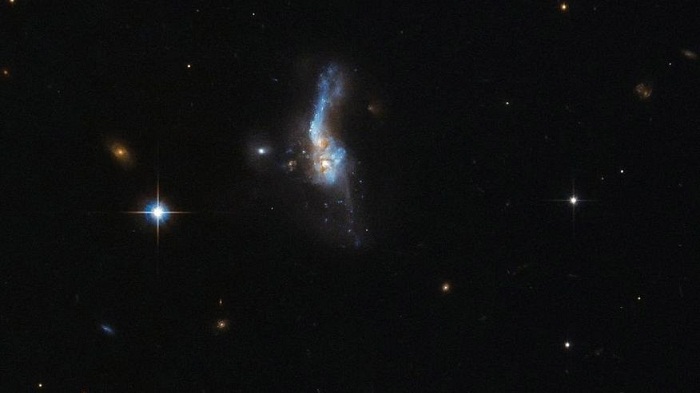Gravitational pull eventually caused the galaxies to merge into and destroy one another, according to NASA.
IRAS 14348-1447 is located over a billion light-years away from Earth and NASA wrote that almost 95 percent of the energy it emits is far-infrared. “It is one fo the most gas-rich examples known of an ultraluminous infrared galaxy, a class of cosmic objects that shine characteristically — and incredibly — brightly in the infrared part of the spectrum,” wrote NASA.
The appearance of “tails and whips” in IRAS 14348-1447 are related to its high amount of molecular gas, which fuels its emission and contributes to its “whirling and ethereal appearance,” wrote NASA.
The image was captured by the Hubble space telescope’s Advanced Camera for Surveys (ACS). The Hubble space telescope, which was launched by NASA in 1990, celebrated its 25th anniversary in 2015. The telescope is operated by NASA and the European Space Agency.
More about:
















































